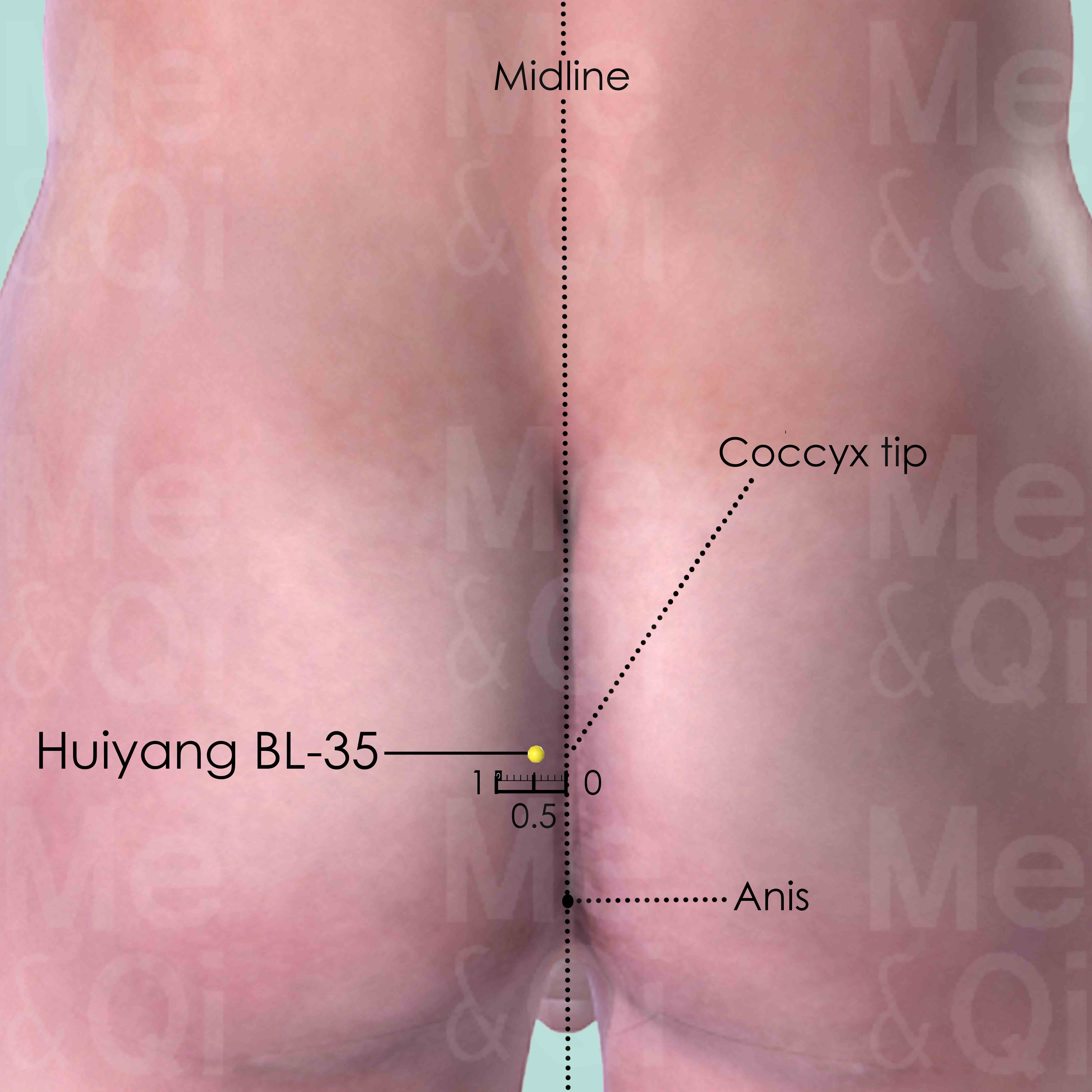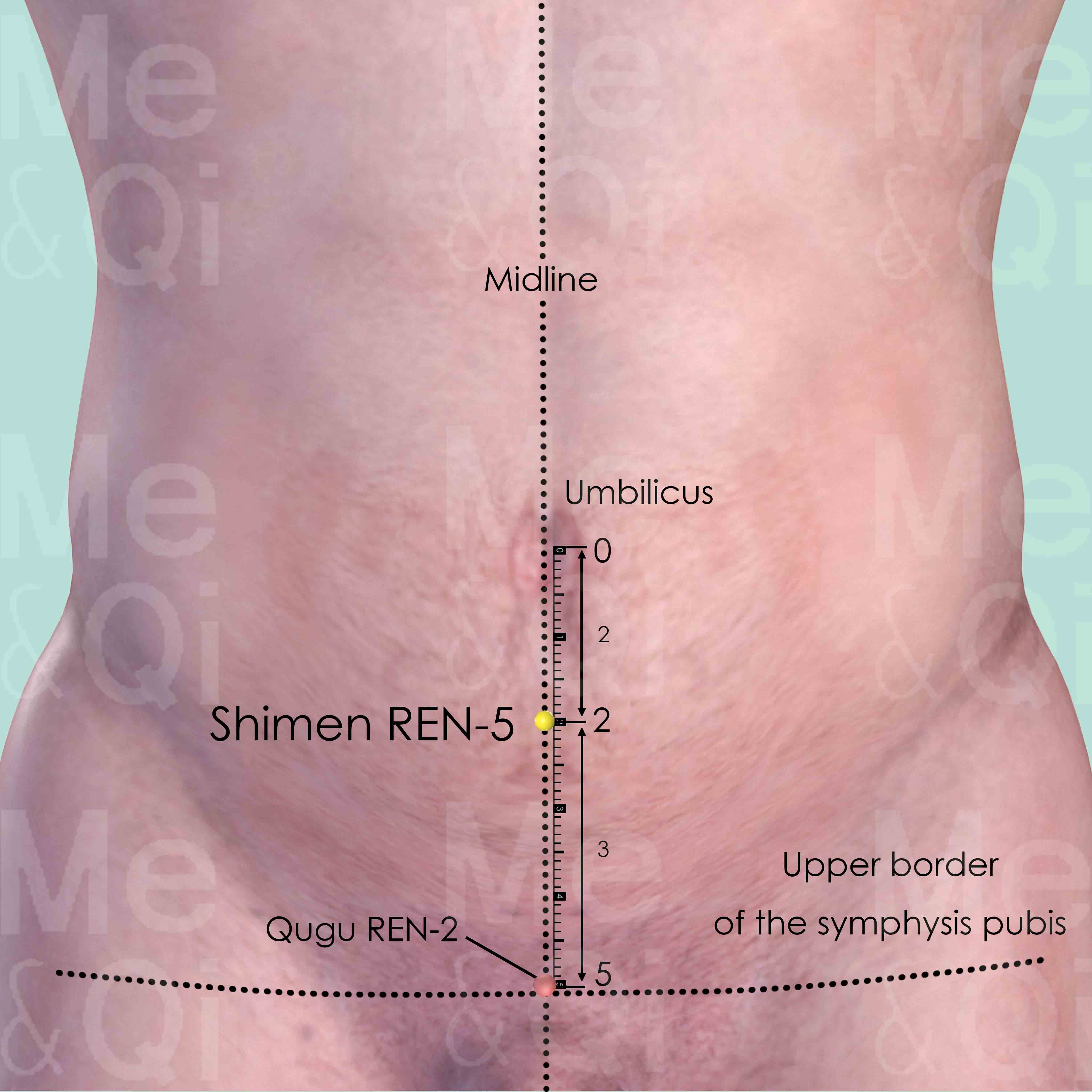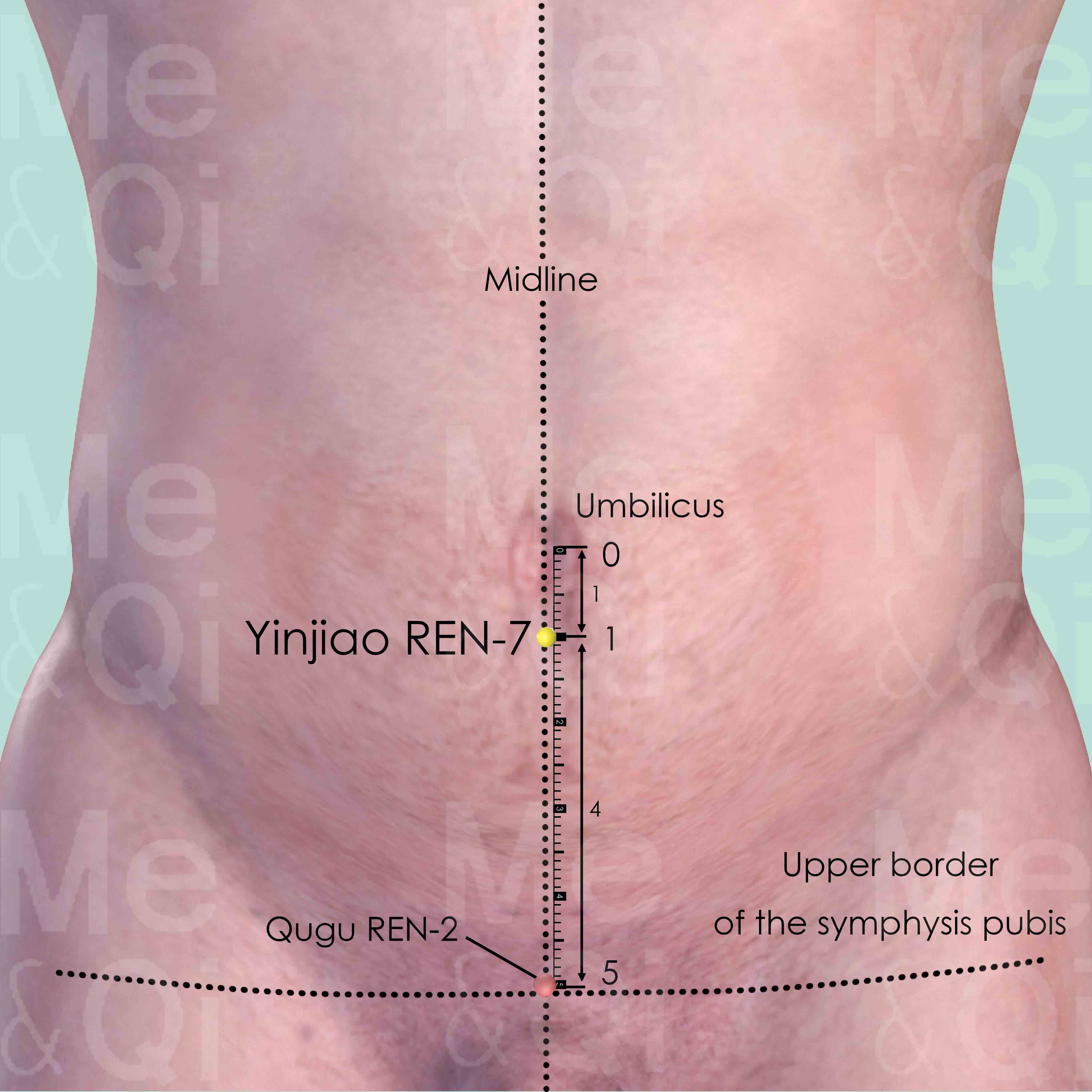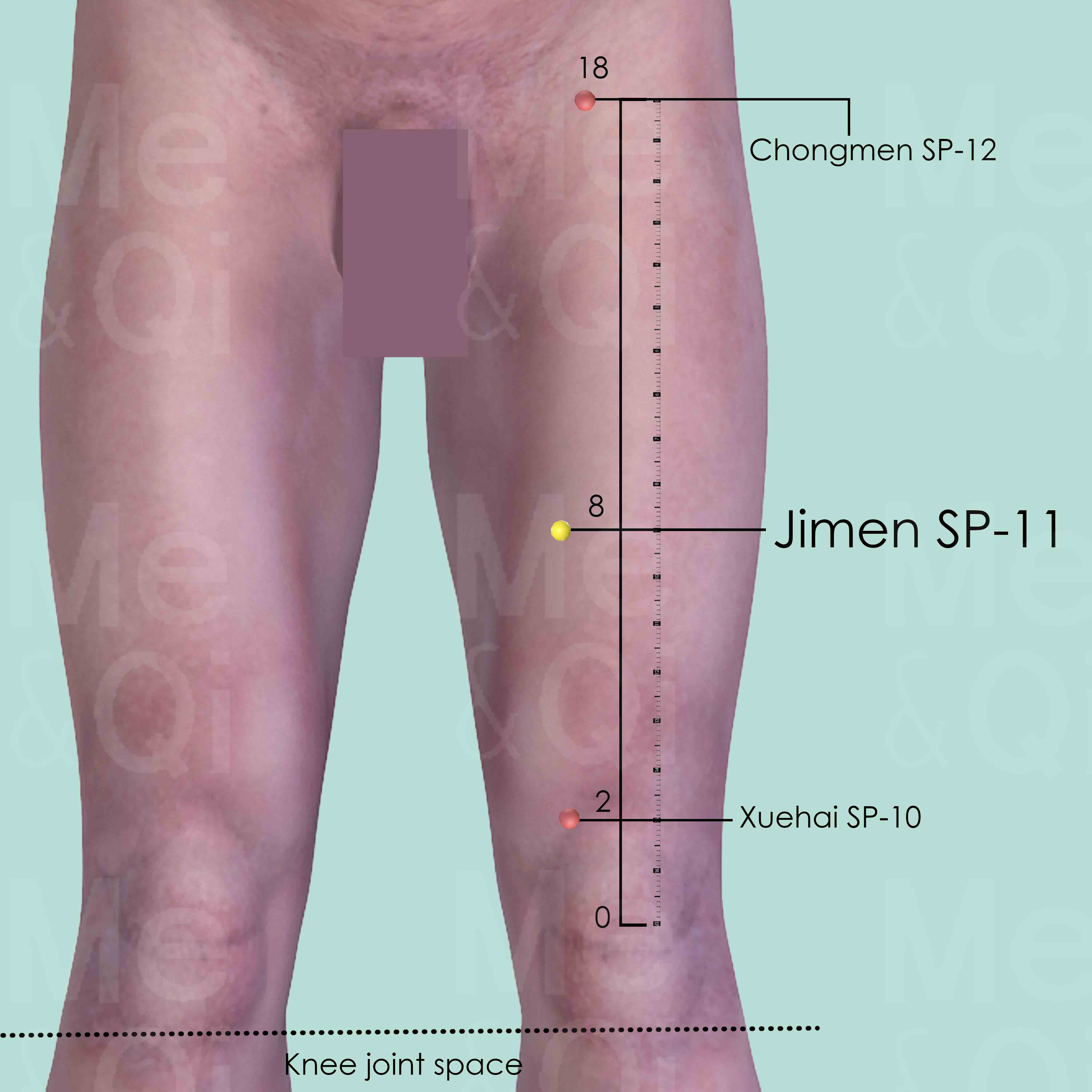Itchy Genitaliaaccording to TCM
Symptom family: Genital Conditions and Swellings
Sub-symptom(s): Swollen And Itchy External Genitalia
What is Itchy Genitalia?
Itchy genitalia, a condition marked by an uncomfortable, often insistent itch in the genital area, is a symptom that affects many individuals. This condition can be a standalone issue or a sign of an underlying health concern, ranging from infections to allergic reactions.
Synonyms for this condition include genital itching, itching in the genital area, and itchy genitals. It's a symptom that can significantly impact an individual's comfort and quality of life, necessitating both medical attention and, for some, a deeper exploration into holistic healing approaches.
How does TCM view Itchy Genitalia?
Traditional Chinese Medicine (TCM) offers a unique perspective on itchy genitalia, viewing it not merely as a localized irritation but as a symptom of broader imbalances within the body. TCM theory suggests that itchy genitalia could be a manifestation of underlying disharmonies such as Damp-Heat, a Yin Deficiency, or Liver Qi Stagnation.
This holistic approach emphasizes the importance of identifying and addressing the root causes of symptoms, rather than merely alleviating surface-level discomfort. Through such a lens, TCM seeks to restore balance and harmony to the body, aiming to alleviate itchy genitalia by correcting the internal imbalances that contribute to its occurrence.
Root Causes of Itchy Genitalia in TCM
Explore below more details about what might cause Itchy genitalia according to TCM.
- By Syndrome
- By Organ
- Heat
- Gallbladder
- Liver
Heat
In TCM "Heat" signifies an excess of Yang energy, leading to an imbalance where heat predominates over the body's cool Yin aspects. This condition is metaphorically akin to an internal over-heating. Symptoms indicative of Heat can include feelings of warmth, fever, sweating, irritability, red face, thirst with a preference for cold drinks, and a rapid pulse. The tongue may appear red with a yellow coating. Unlike the common interpretation of heat in terms of temperature, in TCM, it represents a state of hyperactivity or inflammation in the body.... see more
Heat Patterns That Can Lead to Itchy Genitalia
| Pattern Name | Relevant Symptoms | Relevant Formulas |
|---|---|---|
| Heat Excess in the Liver or Gallbladder | Swollen and itchy external genitalia, Hypochondriac pain, Headaches, Dizziness, Red and irritated eyes, Hearing loss, Ear swelling, Bitter taste in the mouth, Irritability, Painful urination, Foul-Smelling vaginal discharge... see more | Long Dan Xie Gan Tang |
Gallbladder
In TCM the Gallbladder has a unique role in storing and excreting bile, but more importantly, it's seen as crucial for decision-making and courage. It's closely connected to the Liver, assisting in the smooth flow of Qi (vital energy) and supporting the Liver's role in maintaining emotional balance. When the Gallbladder malfunctions or is imbalanced in TCM, it can lead to physical symptoms like gallstones, jaundice, or a bitter taste in the mouth. There might also be digestive disturbances, particularly related to fat metabolism. On an emotional level, a Gallbladder disorder can manifest as indecisiveness, timidity, or a tendency to easily succumb to stress. These symptoms highlight the TCM view of the Gallbladder as integral to both physical processes and emotional resilience.... see more
Gallbladder Patterns That Can Lead to Itchy Genitalia
| Pattern Name | Relevant Symptoms | Relevant Formulas |
|---|---|---|
| Heat Excess in the Liver or Gallbladder | Swollen and itchy external genitalia, Hypochondriac pain, Headaches, Dizziness, Red and irritated eyes, Hearing loss, Ear swelling, Bitter taste in the mouth, Irritability, Painful urination, Foul-Smelling vaginal discharge... see more | Long Dan Xie Gan Tang |
Liver
In TCM the Liver is viewed as the organ responsible for the smooth flow of Qi, Blood, and emotions throughout the body. It plays a key role in regulating mood, storing blood, supporting digestion, and ensuring the health of tendons and eyes. When the Liver malfunctions or is imbalanced in TCM, it can lead to a range of issues such as irritability, mood swings, menstrual irregularities, eye problems, and muscular stiffness or pain. A malfunctioning Liver in TCM reflects not only physical disturbances but also emotional and mental disharmony, emphasizing the holistic approach of TCM in addressing health and wellness.... see more
Liver Patterns That Can Lead to Itchy Genitalia
| Pattern Name | Relevant Symptoms | Relevant Formulas |
|---|---|---|
| Heat Excess in the Liver or Gallbladder | Swollen and itchy external genitalia, Hypochondriac pain, Headaches, Dizziness, Red and irritated eyes, Hearing loss, Ear swelling, Bitter taste in the mouth, Irritability, Painful urination, Foul-Smelling vaginal discharge... see more | Long Dan Xie Gan Tang |
TCM Herbal Formulas for Itchy Genitalia
See more details below about Long Dan Xie Gan Tang, a herbal formula used to address itchy genitalia.
- By Cause
- By Formula Type
- Heat
- Formulas that clear heat from the organs
Top Formula for Heat:
Long Dan Xie Gan Tang
Suitable for Heat patterns that may cause itchy genitalia, such as Heat Excess in the Liver or Gallbladder
Learn moreFormulas that clear Heat from the Organs
These formulas are suitable for some itchy genitalia-causing patterns like Heat Excess in the Liver or Gallbladder.
One such formula is Long Dan Xie Gan Tang, with chinese gentian as a key herb.
Acupoints for Itchy Genitalia
In addressing itchy genitalia, TCM turns to acupuncture, a practice that involves stimulating specific points on the body to correct imbalances and restore health. Several acupoints are considered beneficial for alleviating itchy genitalia. These include points along the Bladder Channel such as Huiyang BL-35, which clears Damp-Heat and regulates the Lower Burner, and Pangguangshu BL-28, known for its role in regulating the Bladder and resolving Damp-Heat.
The Kidney Channel also offers points like Rangu KID-2, which cools the Blood and clears Empty-Heat, and Zhaohai KID-6, effective for nourishing the Kidney Yin. Additionally, the Directing Vessel presents acupoints such as Shimen REN-5 and Zhongji REN-3, both crucial for regulating the Lower Burner and clearing Dampness. These acupoints, when stimulated, can aid in addressing the root causes of itchy genitalia, providing relief through the principles of TCM.
Explore below some acupoints used to address itchy genitalia, organized by meridian.
- By Meridian
- Bladder Channel
- Kidney Channel
- Directing Vessel
- Spleen Channel
- Liver Channel
- Heart Channel
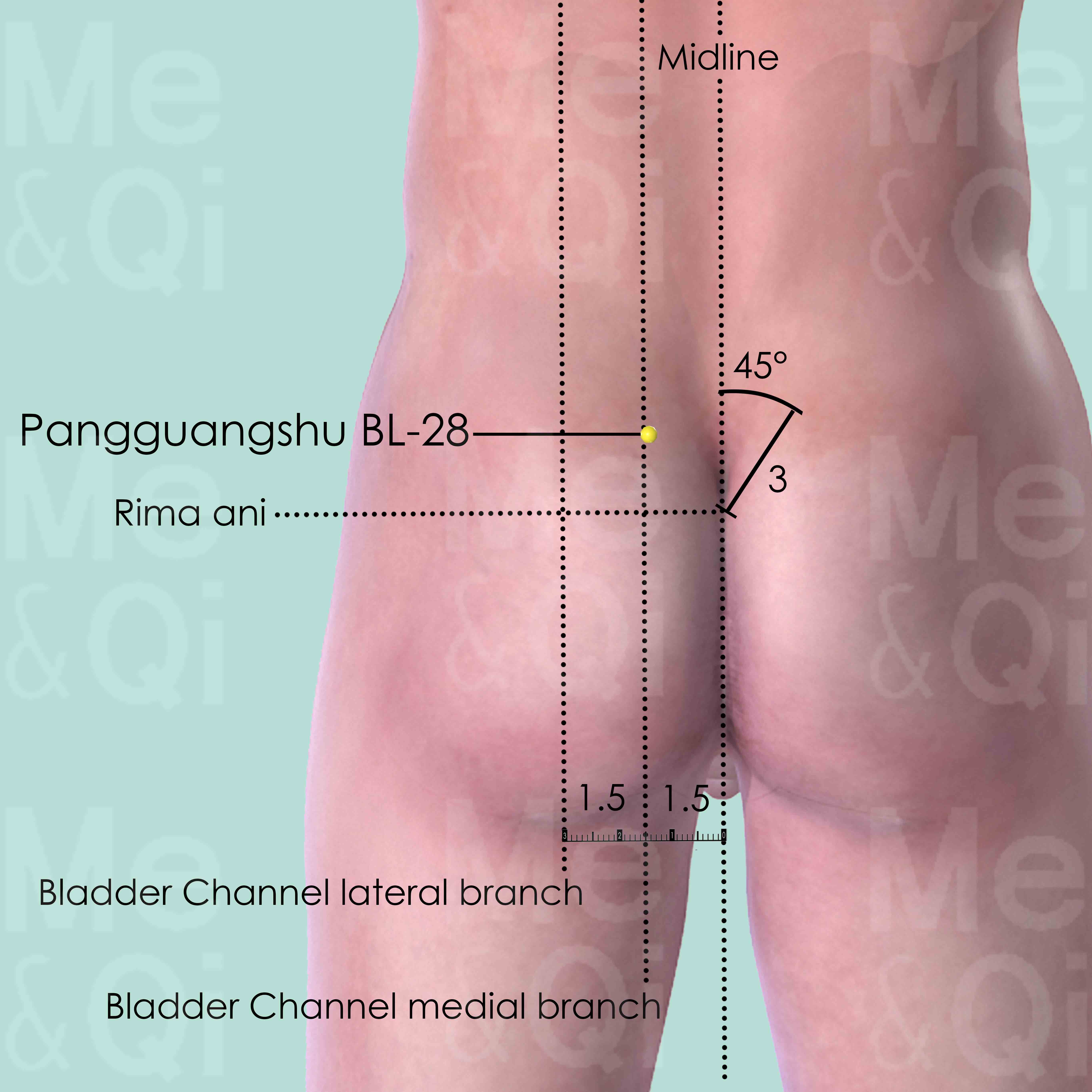
Pangguangshu BL-28
At the level of the 2nd posterior sacral foramen, 1.5 cun lateral to the posterior midline, in the depression between the medial border of the posterior superior iliac spine (PSIS) and the sacrum.
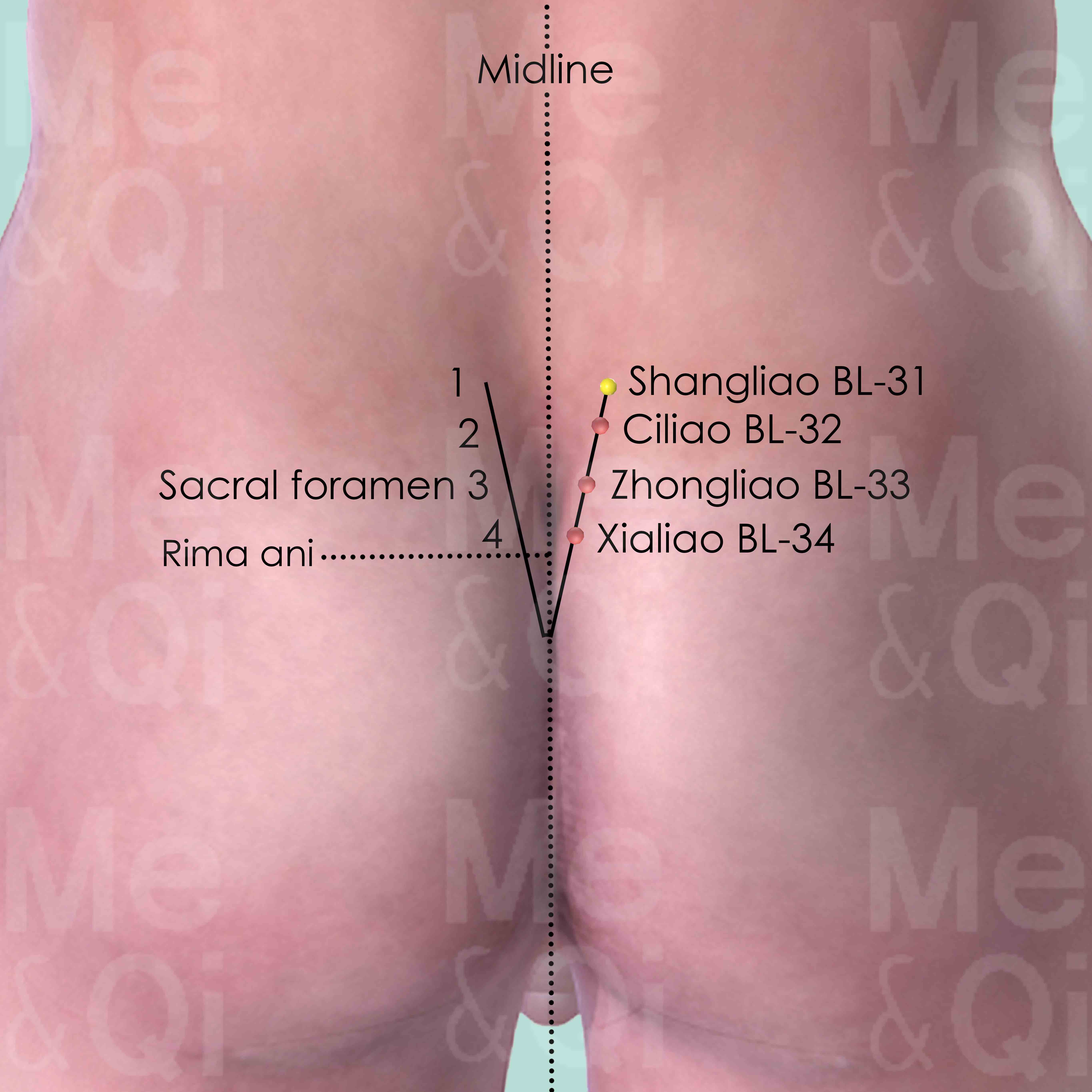
Shangliao BL-31
In the 1st posterior sacral foramen, about midway between the posterior superior iliac spine (PSIS) and the midline.
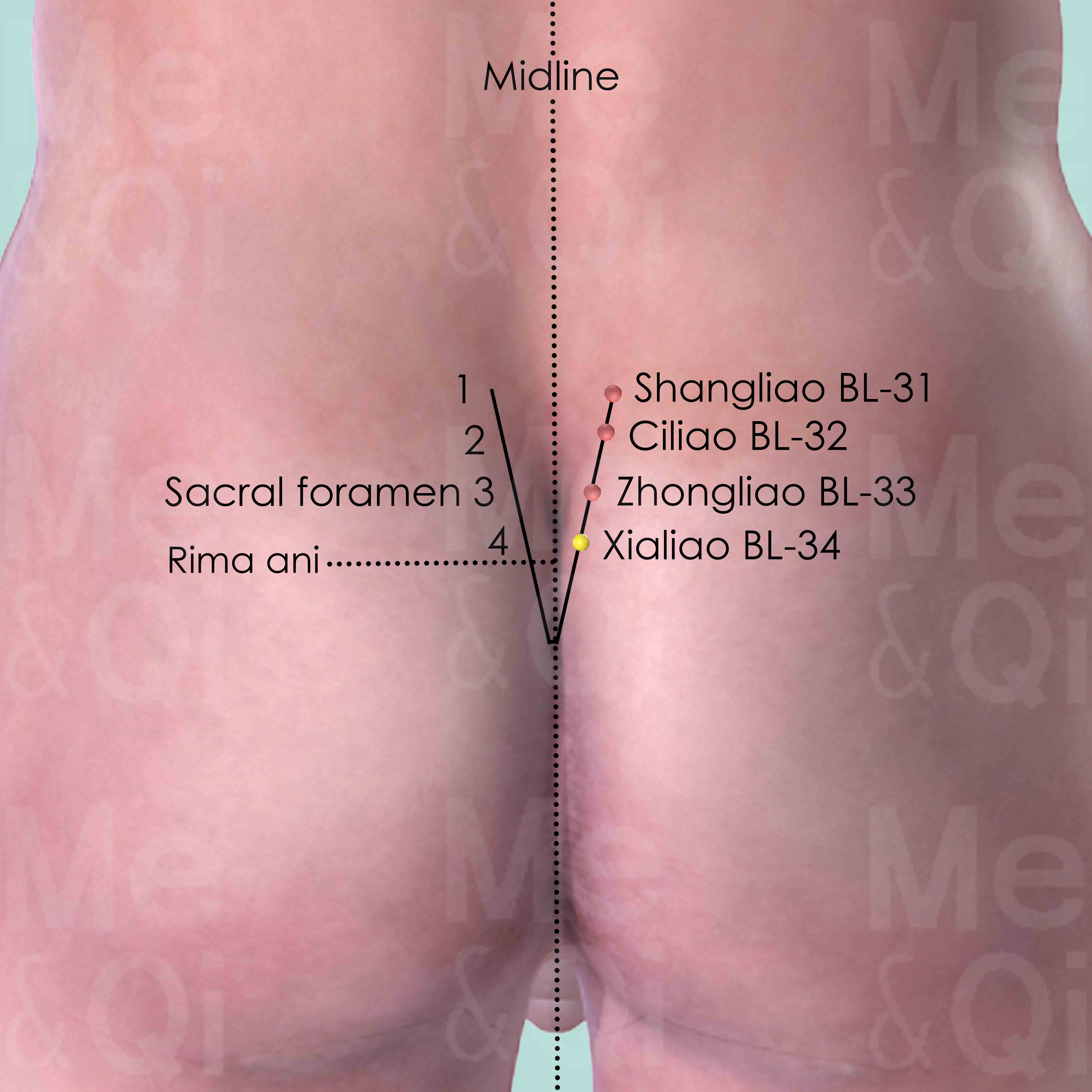
Xialiao BL-34
In the 4th posterior sacral foramen, between the posterior superior iliac spine and the midline.
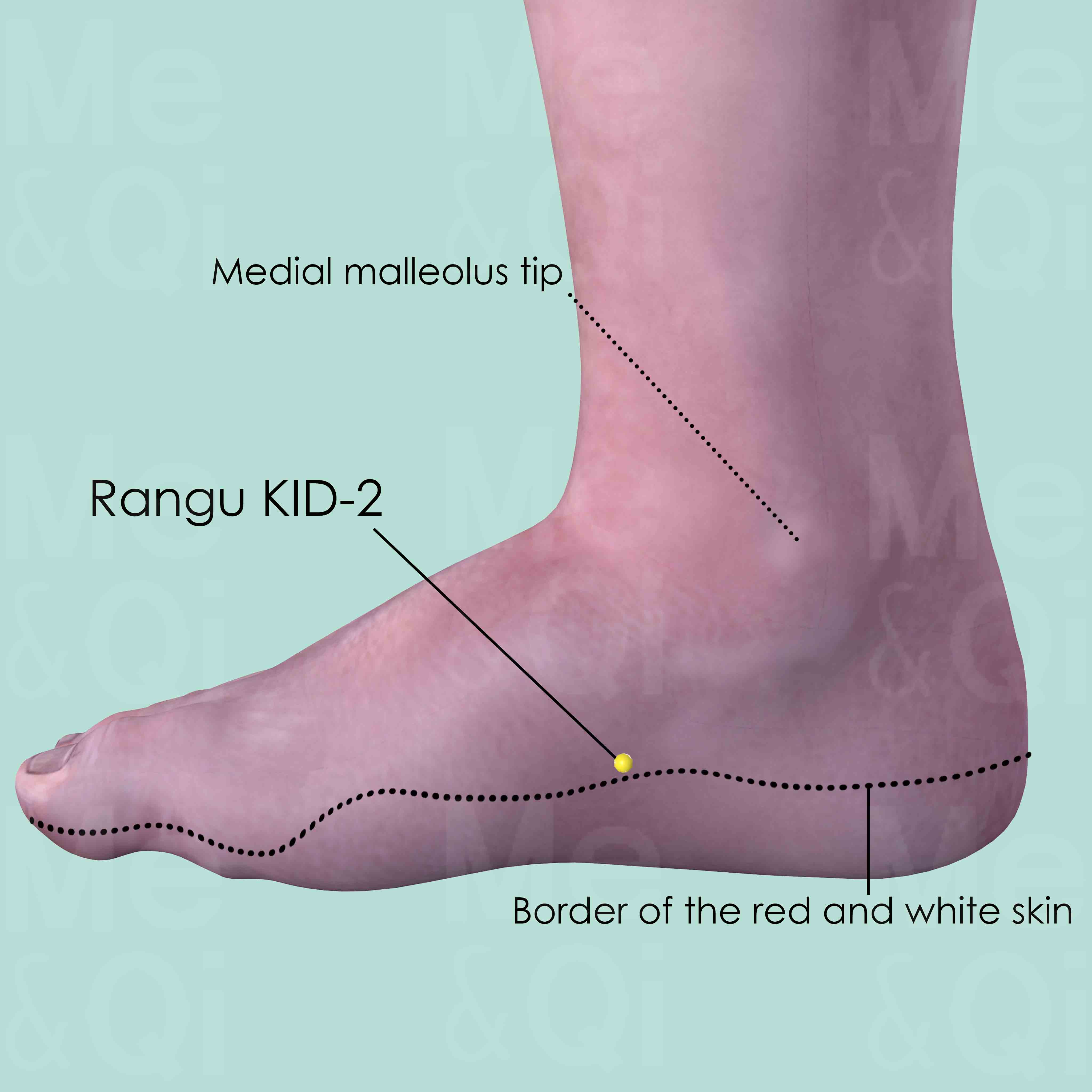
Rangu KID-2
Anterior and inferior to the medial malleolus tip, in the depression on the lower border of the navicular bone, at the border of the 'red and white' skin.
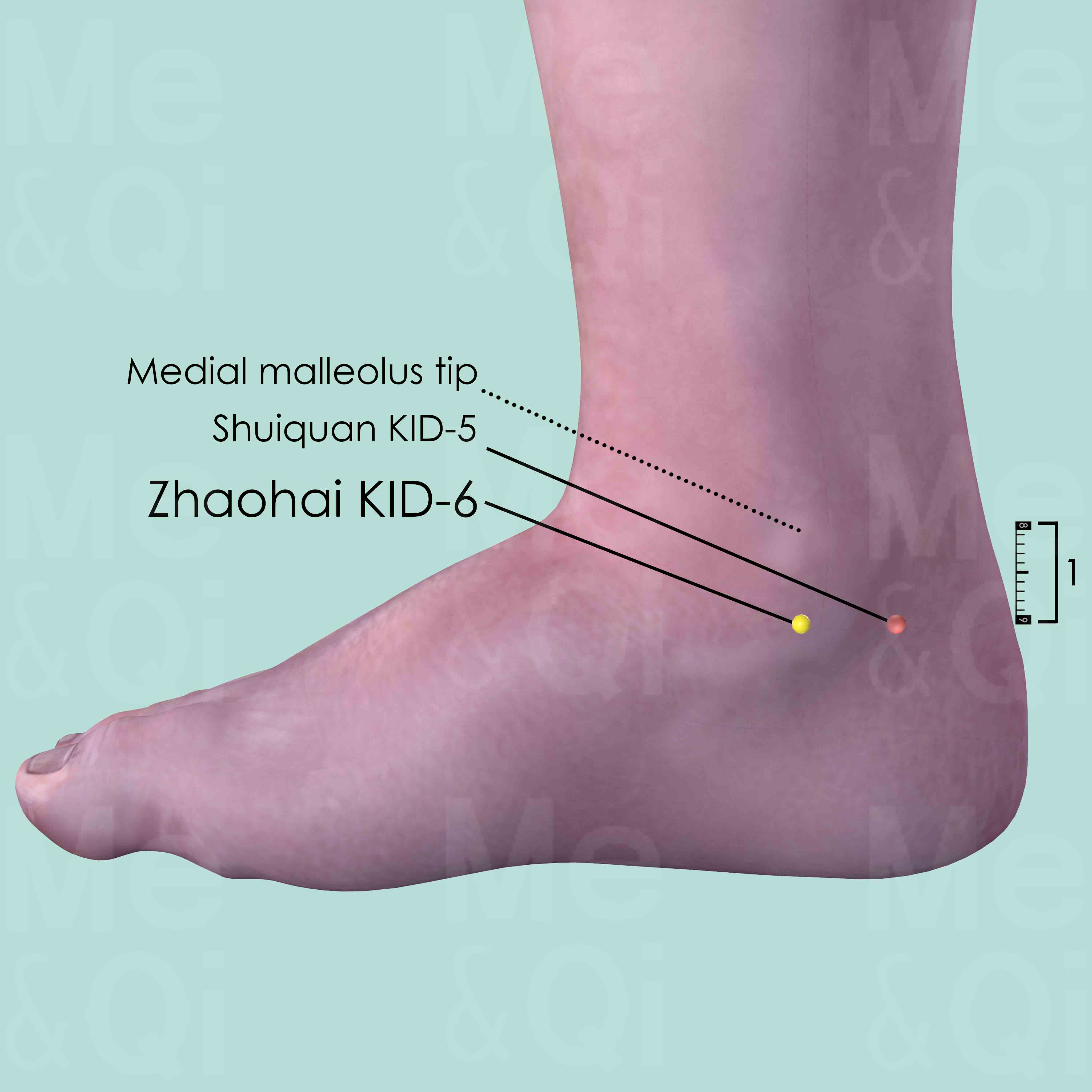
Zhaohai KID-6
Approximately 1 cun below the medial malleolus tip, over the joint space between the talus and the calcaneus.
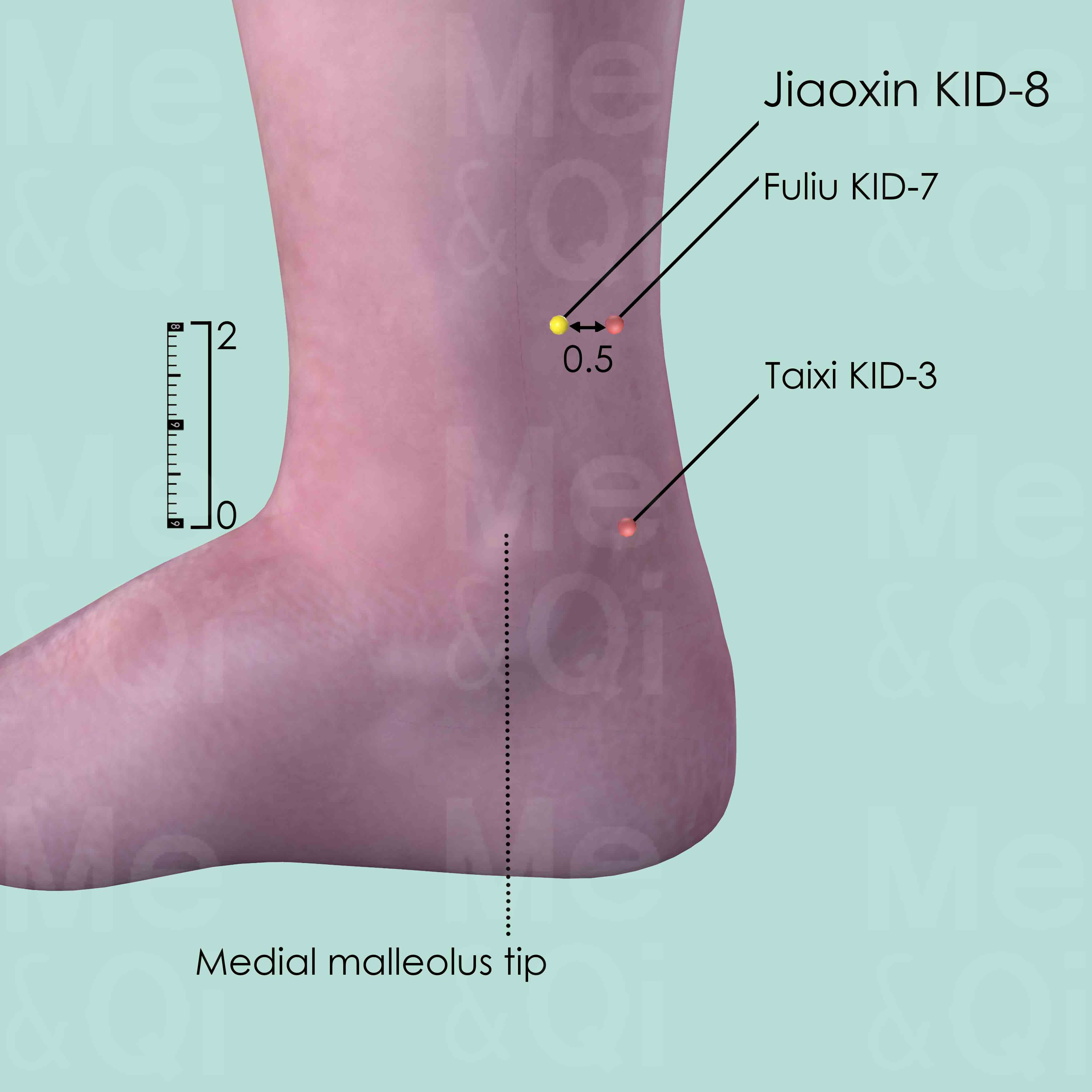
Jiaoxin KID-8
2 cun above Taixi KID-3, 0.5 cun anterior to Fuliu KID-7, posterior to the medial border of tibia.
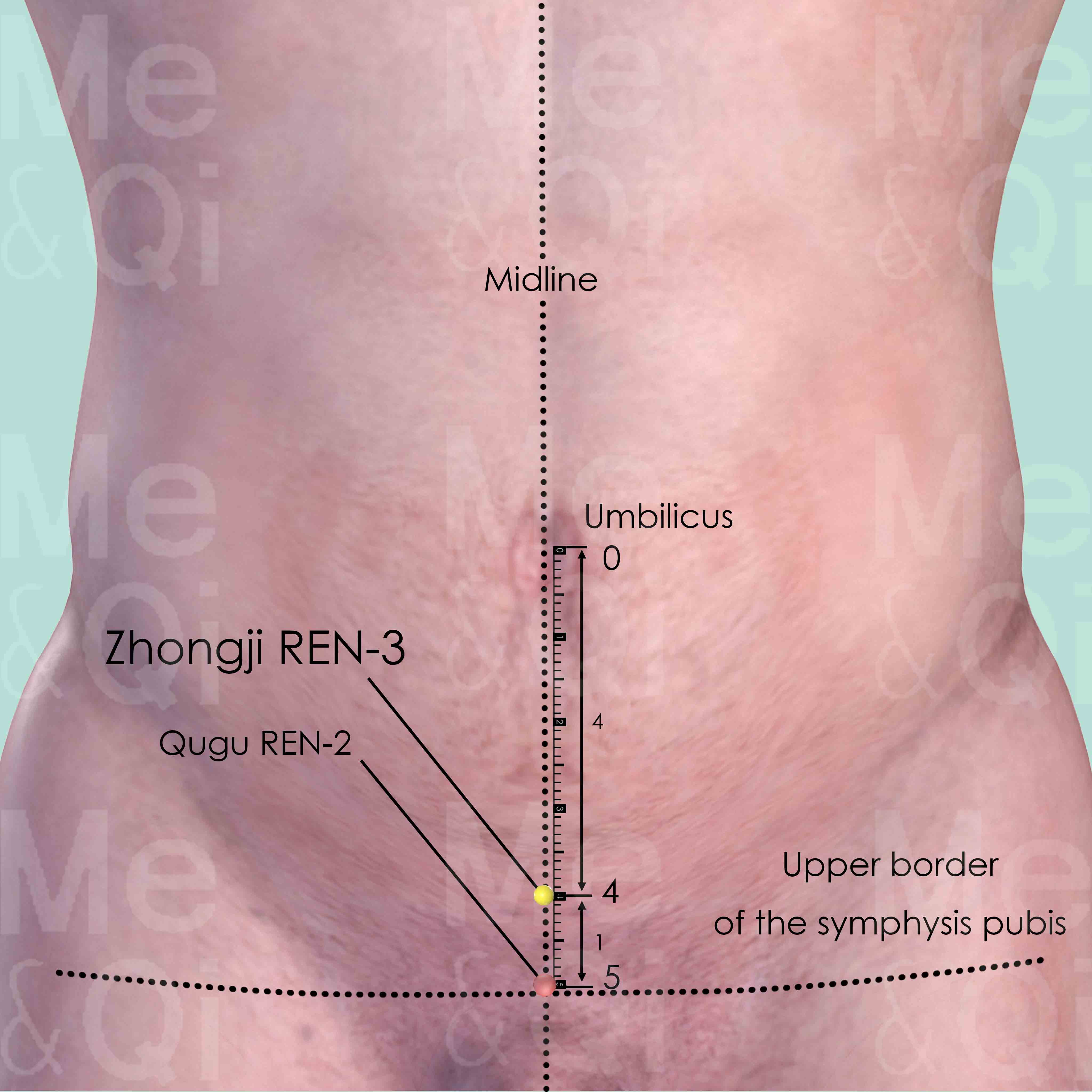
Zhongji REN-3
On the anterior midline, 4 cun below the umbilicus, 1 cun above Qugu REN-2, which is located at the upper border of the symphysis pubis.
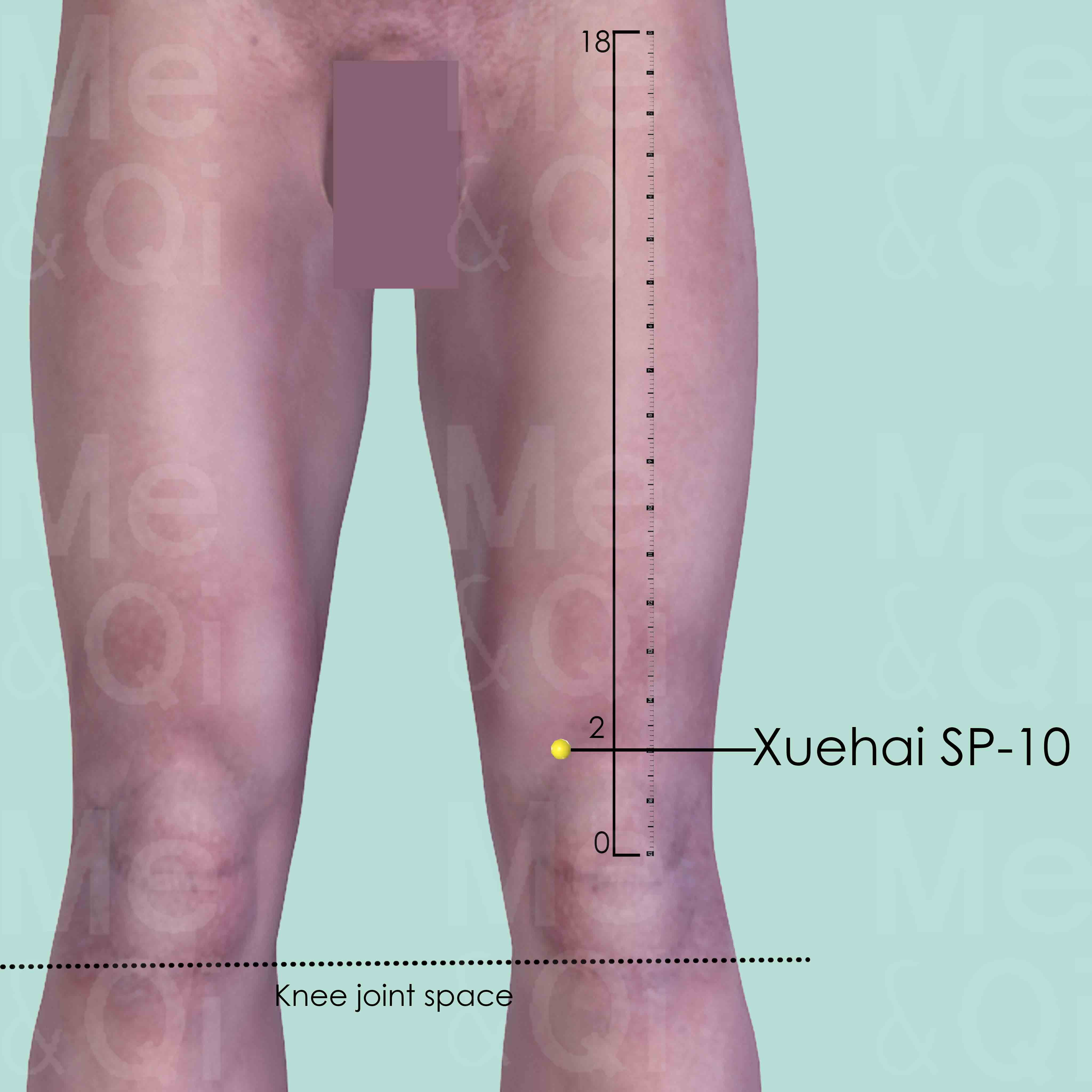
Xuehai SP-10
When knee is flexed, Xuehai SP-10 is 2 cun above the medial upper border of the patella, in a depression on the vastus medialis muscle.
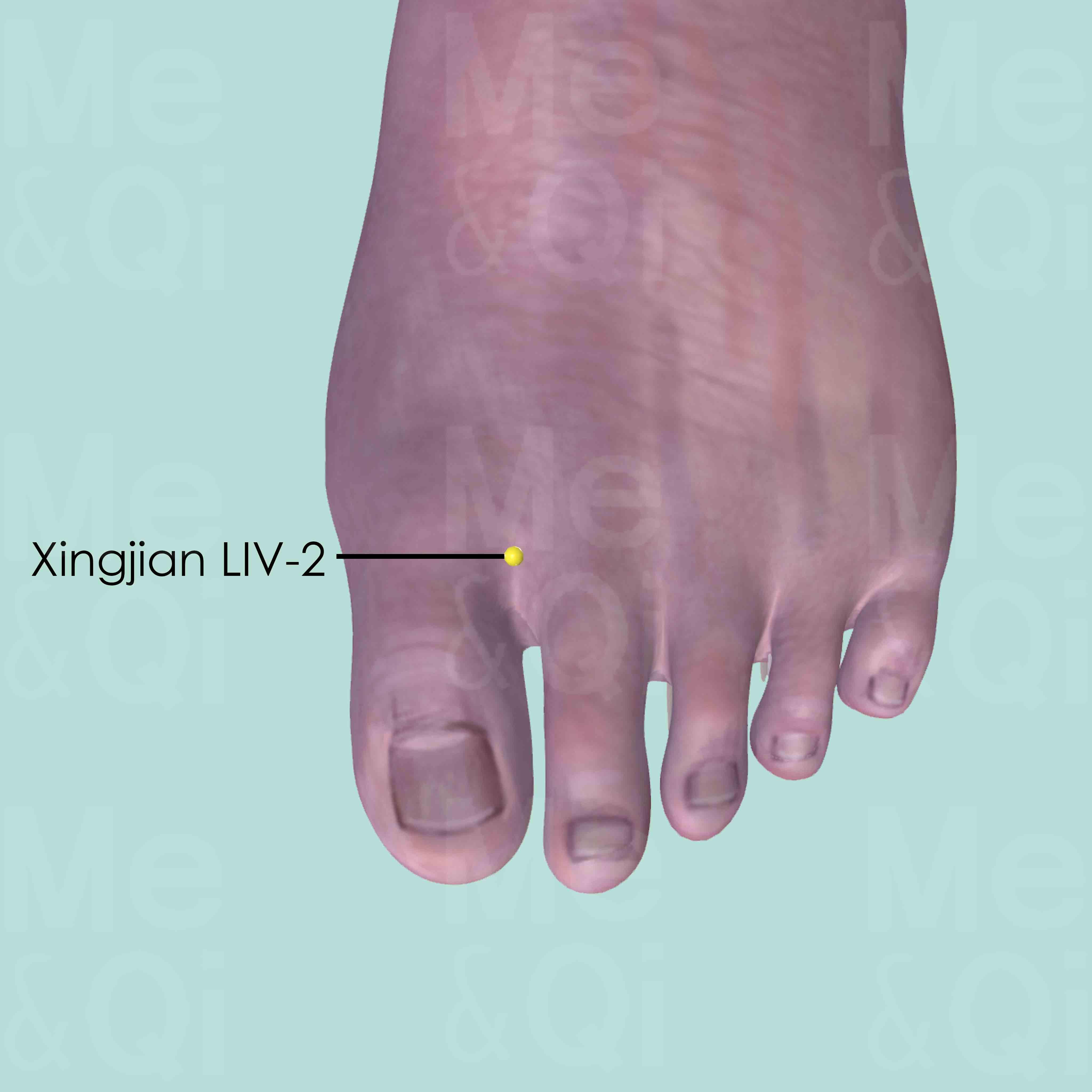
Xingjian LIV-2
Between the first and second toe, on the dorsum of the foot, 0.5 cun proximal to the interdigital fold.
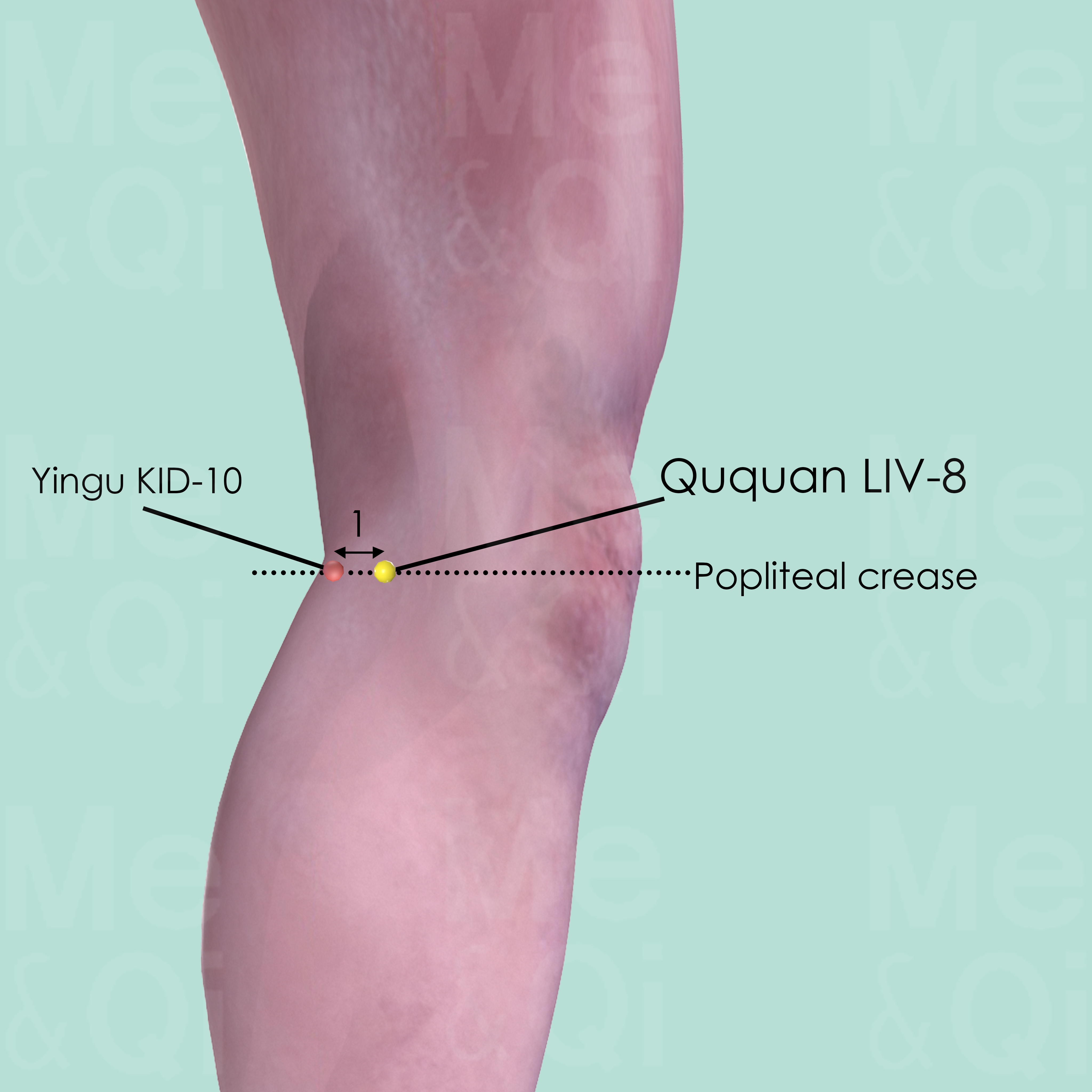
Ququan LIV-8
On the medial aspect of the knee join. Flex the knee and locate the point above the medial end of the popliteal crease, posterior to the medial condyle of the tibia, on the anterior border of the insertion of semimembranosus and semitendinosus muscle, about 1 cun anterior to Yingu KID-10.
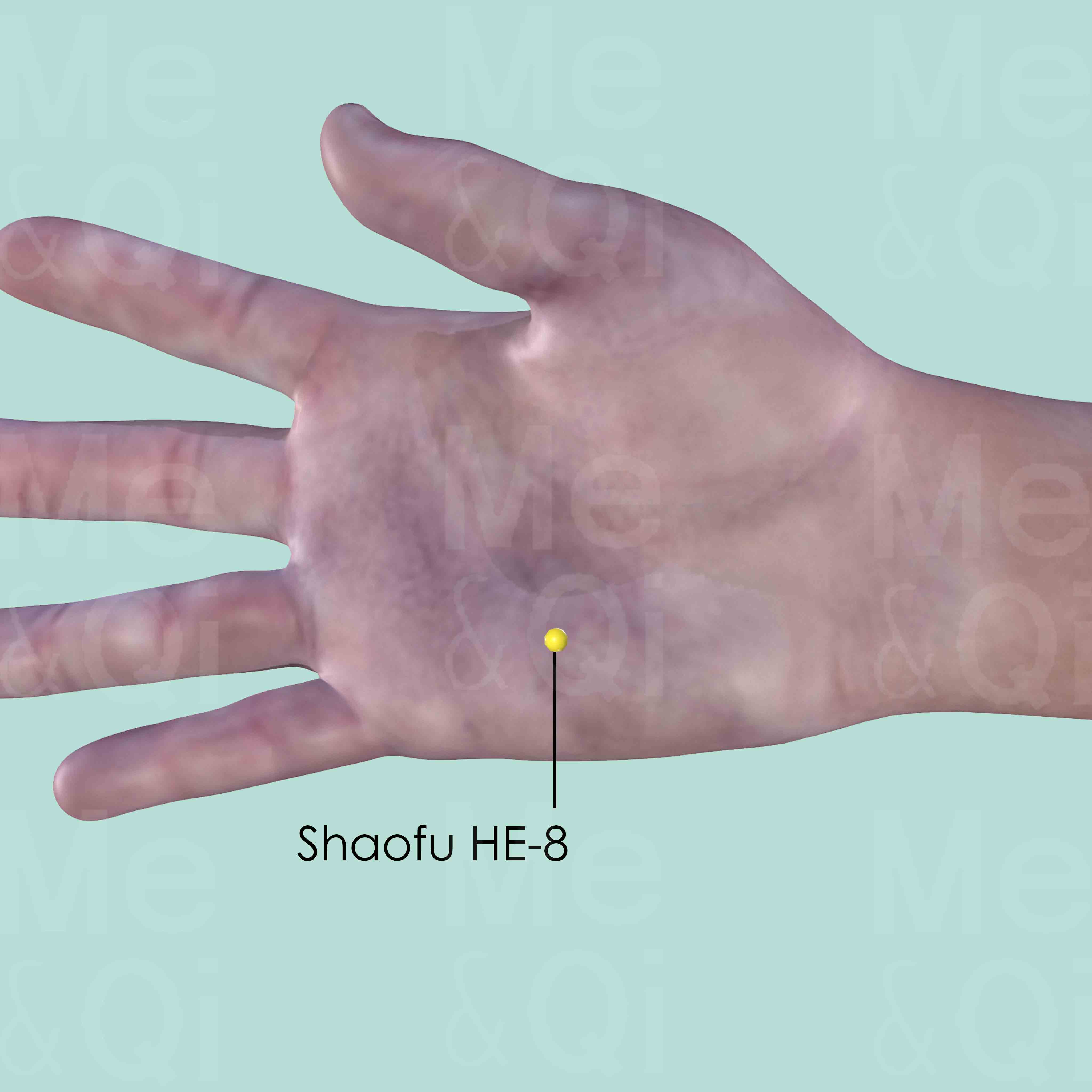
Shaofu HE-8
On the palmar surface, between the 4th and 5th metacarpal bones. When a fist is made, the point is where the tip of the little finger rests.

